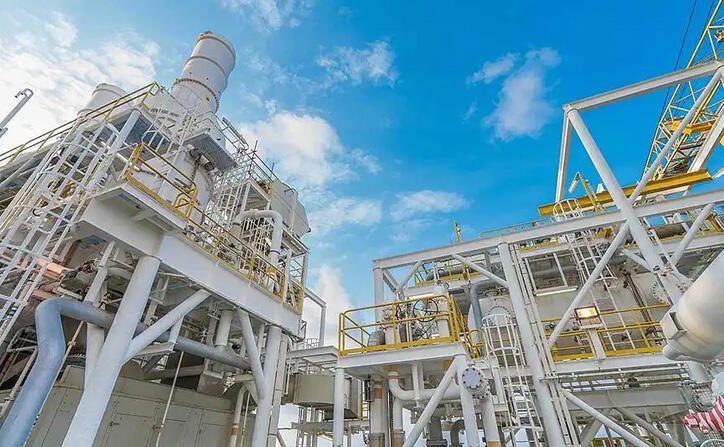Industrial Waste Heat Recovery (WHR) refers to the process of capturing and reusing heat that would otherwise be lost from industrial processes. Many industries generate significant amounts of waste heat during operations, such as from hot gases, liq...

Industrial Waste Heat Recovery (WHR) refers to the process of capturing and reusing heat that would otherwise be lost from industrial processes. Many industries generate significant amounts of waste heat during operations, such as from hot gases, liquids, or surfaces. Instead of allowing this heat to dissipate into the environment, it can be recovered and reused to improve energy efficiency, reduce costs, and lower environmental impact.
Plate heat exchangers (PHEs) are widely used due to their high heat transfer efficiency, compact design, and versatility. They are particularly effective in capturing waste heat from hot process streams, exhaust gases, or cooling systems and transferring it to other fluids to either preheat incoming fluids or support heating needs.
Many industrial processes generate hot exhaust gases, such as combustion gases from furnaces, kilns, boilers, and engines. These gases are typically released into the atmosphere without utilizing their thermal energy, leading to energy loss.
Application: Plate heat exchangers can be installed in flue gas heat recovery systems to capture waste heat from these gases and transfer it to another fluid, such as water or oil. This recovered heat can be used for preheating air, water, or other process fluids that are needed in the plant, thus reducing the need for additional energy inputs.
Example: In a cement plant, exhaust gases from the kiln can be passed through a PHE system, which heats water used in the plant or preheats the air supplied to the kiln, improving energy efficiency.
Chemical manufacturing processes often involve reactions that produce significant amounts of waste heat. For instance, in reactions involving high temperatures, such as distillation or catalytic processes, large volumes of hot gas or liquid are released.
Application: Plate heat exchangers can be used to recover heat from hot reaction gases or liquids and transfer it to incoming fluids. This can help reduce energy consumption in the preheating of reactants or heating of other parts of the plant.
Example: In petrochemical refineries, PHEs are employed to recover heat from hot hydrocarbon streams and transfer it to other fluid streams, optimizing energy use during refining processes like distillation or cracking.
In steel mills and other metal production processes, large amounts of waste heat are produced from processes such as smelting, forging, or rolling. This heat, if left unused, represents a significant loss of energy.
Application: Plate heat exchangers are used to recover waste heat from hot gases emitted by furnaces or hot water produced during cooling processes. The recovered heat can be used to preheat combustion air or water for steam generation, reducing the energy needed to reach the desired temperatures.
Example: In a steel plant, hot gases from a blast furnace can be passed through a PHE system, which recovers the heat and uses it to preheat the water for steam production or other processes.
Power plants, especially those using fossil fuels, often produce large amounts of waste heat during electricity generation. This heat is typically released into the atmosphere through cooling towers or heat exchangers.
Application: Plate heat exchangers can be used in power plants to recover waste heat from cooling water, exhaust gases, or steam. The recovered heat can be utilized to preheat feedwater entering the boiler or assist in cogeneration (combined heat and power systems).
Example: In a thermal power plant, flue gases from the boiler or steam exhaust from turbines can be used to recover heat through a PHE system, providing additional energy for heating or process requirements.
In the food and beverage sector, various operations such as pasteurization, sterilization, and evaporation require significant energy inputs, often resulting in high-temperature waste streams.
Application: Plate heat exchangers can be used to recover heat from hot wastewater, exhaust gases, or heating/cooling fluids. This recovered heat can be used to preheat incoming process water or even aid in energy-intensive processes like drying or evaporation.
Example: In a dairy plant, heat from hot wastewater generated during cleaning or production can be recovered and used to preheat water or milk before it enters the pasteurization process.
Many industrial processes, especially those in chemical and manufacturing sectors, involve cooling systems to maintain the temperature of reactors, machinery, or storage. The coolant, once warmed up, is typically discarded without utilizing the thermal energy it carries.
Application: Plate heat exchangers can be used to recover the waste heat from cooling water or cooling air. The heat can be transferred to other process fluids, reducing the need for additional cooling or heating energy.
Example: In an automotive manufacturing plant, cooling systems for machinery or engines can be paired with PHEs to recover heat and reuse it in preheating process water or in the heating of industrial space.
In industrial areas, heat recovery systems can be integrated with district heating systems, where waste heat from industrial plants is transferred to surrounding buildings or facilities.
Application: Plate heat exchangers can be used as part of district heating networks to transfer recovered heat from industrial processes to nearby buildings, reducing the need for additional heating energy from fossil fuels or other sources.
Example: A large industrial facility may use PHEs to capture excess heat from its cooling towers and transfer it to a district heating network serving nearby residential or commercial buildings.